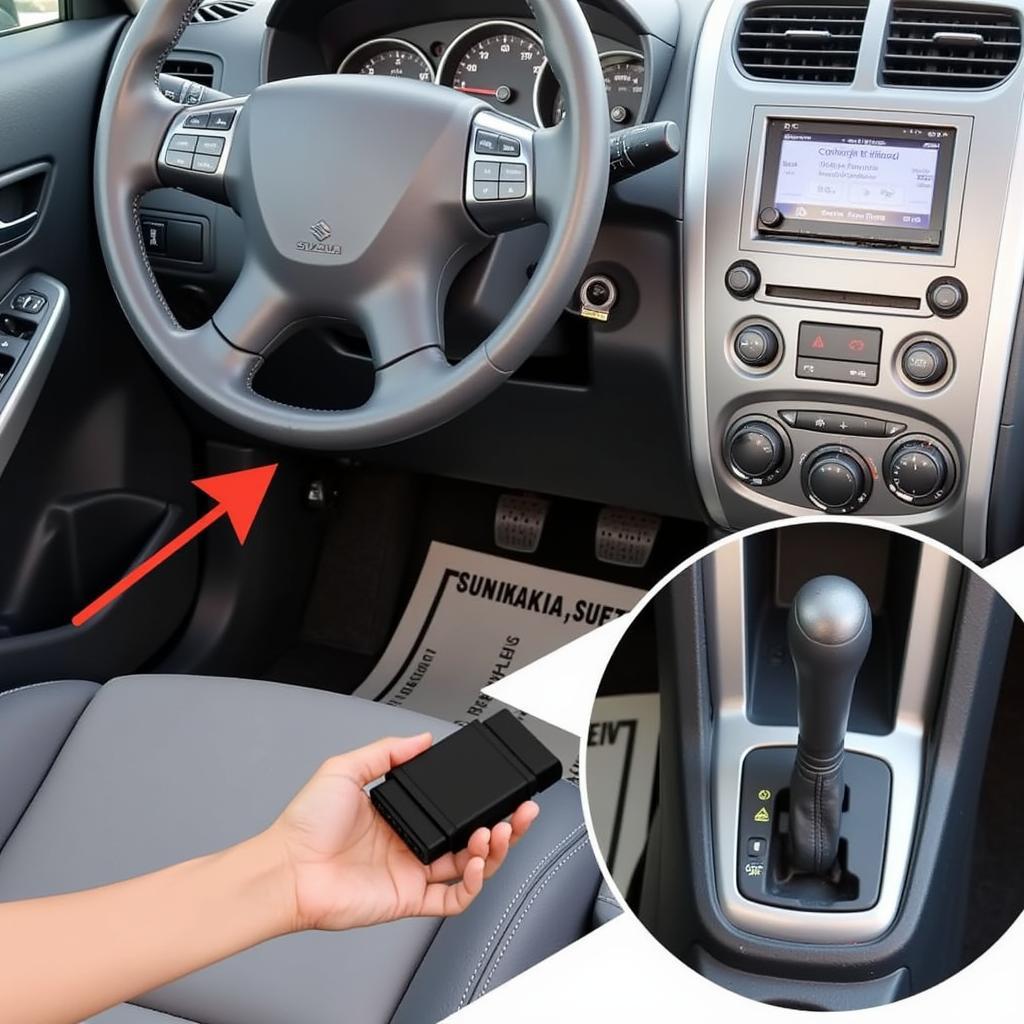Onboard diagnostics in South African Suzuki cars have evolved significantly, playing a crucial role in maintaining vehicle performance and complying with emissions regulations. Understanding how these systems work can empower owners to better care for their vehicles. This article delves into the intricacies of onboard diagnostics for Suzuki cars in South Africa, covering everything from basic OBD-II codes to more advanced diagnostic techniques.
Understanding OBD-II in South African Suzuki Cars
South Africa, like many countries, adopted the OBD-II (On-Board Diagnostics, Second Generation) standard. This means that virtually all Suzuki cars manufactured for the South African market since the late 1990s are equipped with an OBD-II port. This standardized system allows mechanics and car owners to access diagnostic trouble codes (DTCs) which indicate potential problems within the vehicle’s various systems. These systems range from engine management and emissions control to transmission and airbag systems.
How OBD-II Works in Your Suzuki
The OBD-II system constantly monitors various sensors throughout your Suzuki. When a sensor detects a reading outside the acceptable parameters, the system generates a specific DTC. This code is stored in the vehicle’s computer and can be accessed via the OBD-II port, usually located under the dashboard on the driver’s side. By using a simple OBD-II scanner, you can retrieve these codes and gain insight into the potential issue.
 OBD-II port location in a Suzuki Swift
OBD-II port location in a Suzuki Swift
Common OBD-II Codes for Suzuki in South Africa
While DTCs are standardized, certain codes appear more frequently in specific makes and models. Some common codes for Suzuki cars in South Africa relate to the oxygen sensor, catalytic converter, and evaporative emission system. These codes might indicate anything from a minor sensor malfunction to a more serious problem requiring professional attention.
Decoding the Codes: What They Mean for Your Suzuki
Understanding what each code means can be daunting. Thankfully, numerous online resources and OBD-II code lookup tools are available. These resources can help you decipher the meaning of the codes and determine the appropriate course of action. Remember, while these tools provide valuable information, a proper diagnosis from a qualified mechanic is always recommended.
Advanced Diagnostics for Suzuki Cars
Beyond basic OBD-II code reading, more advanced diagnostic tools are available for Suzuki cars in South Africa. These tools, often used by professional mechanics, offer a deeper level of analysis and can pinpoint issues with greater precision. These tools can include specialized software for Suzuki vehicles, allowing access to manufacturer-specific data and diagnostics.
Utilizing Specialized Software for Suzuki Diagnostics
Specialized software can provide live data streams from various sensors, allowing mechanics to monitor real-time performance and identify intermittent issues that might not trigger a DTC. This advanced level of diagnostics is crucial for complex problems or when basic OBD-II codes don’t provide enough information.
Maintaining Your Suzuki with Onboard Diagnostics
Regularly checking your Suzuki’s onboard diagnostics can help you stay ahead of potential problems. This proactive approach can save you money on costly repairs in the long run and ensure your vehicle remains in optimal condition. Even if you don’t experience any noticeable issues, periodically scanning for codes can reveal underlying problems before they become major headaches.
Conclusion
Onboard diagnostics south african cars suzuki are essential for maintaining your vehicle’s performance and longevity. Understanding how to use these tools, from basic OBD-II scanners to specialized software, empowers you to take control of your car’s health. By regularly checking for diagnostic trouble codes and seeking professional assistance when needed, you can ensure your Suzuki remains reliable and roadworthy for years to come.
FAQ
- Where is the OBD-II port located in my Suzuki? (Usually under the dashboard on the driver’s side).
- Can I fix the problem indicated by the OBD-II code myself? (It depends on the complexity of the issue. Some issues are simple fixes, while others require professional assistance.)
- What should I do if I get a code I don’t understand? (Consult a reliable online resource or contact a qualified mechanic.)
- How often should I check my Suzuki’s onboard diagnostics? (Periodically, even if you don’t experience any issues.)
- Are OBD-II scanners expensive? (Basic scanners are relatively affordable and can be a valuable investment for car owners.)
- Do all South African Suzuki cars have OBD-II? (Almost all models manufactured since the late 1990s are equipped with OBD-II.)
- What are some of the most common issues indicated by OBD-II codes in Suzuki cars? (Oxygen sensor, catalytic converter, and evaporative emission system issues are common.)
Have other questions or need more specific information? Check out our other articles on car maintenance and diagnostics.
Need expert assistance? Contact us via WhatsApp: +1(641)206-8880 or Email: [email protected]. Our 24/7 customer support team is ready to help.
